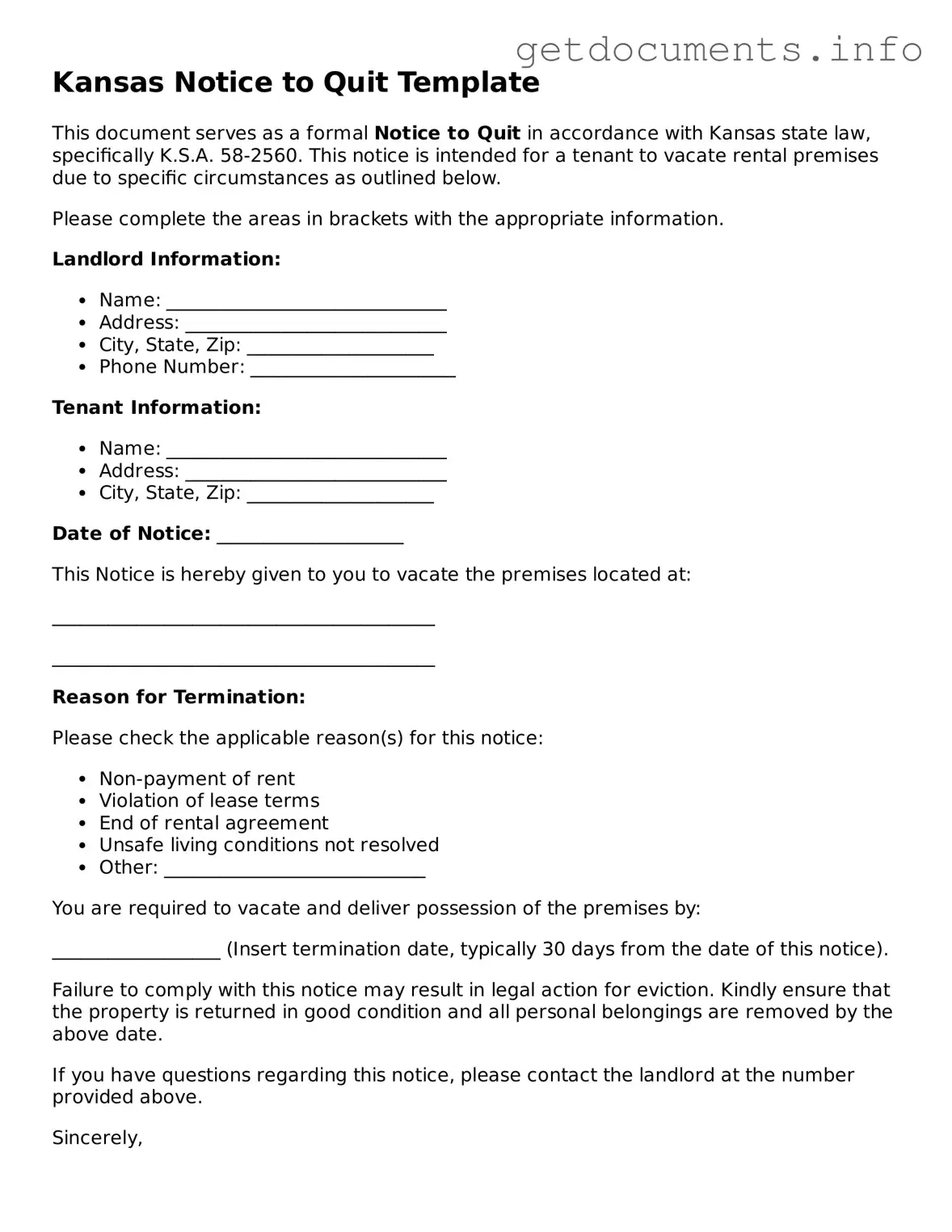Free Notice to Quit Template for Kansas
The Kansas Notice to Quit form is a legal document used by landlords to formally notify tenants of the need to vacate a rental property. This notice serves as a crucial step in the eviction process, ensuring that tenants are aware of the landlord's intentions. Understanding how to properly complete and deliver this form is essential for both parties involved.
To get started on filling out the Kansas Notice to Quit form, click the button below.
Access Notice to Quit Editor
